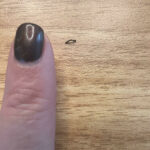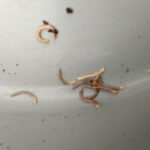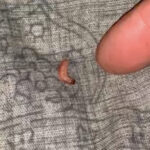Some symptoms of cat worms are visible to the naked eye while others may be observed through your cat’s behavior. One of the most obvious symptoms of cat worms is the presence of these creatures in your cat’s stool. Your cat might have any number of parasitic worms in its feces such as the half-inch-long hookworm or a tapeworm. The length of the tapeworm may vary, but this worm has the ability to reach up to three feet long if left untreated. It may also have as many as 90 segments at its greatest lengths.
Other types of parasitic worms common to felines include: roundworm, whipworm, and heartworm. Round worms look like spaghetti while tapeworm segments look like grains of rice Hookworms, tapeworms, roundworms, and whipworms live in the cat’s intestines and the heartworm lives in the cat’s heart and in the blood vessels that lead from the heart to the lungs. If left untreated any type of cat worm can be fatal, but the heartworm is the most dangerous of them all.
In addition to finding worms in your cat’s stool, other symptoms of worms in cats include:
·Change in your cat’s appetite
·Coughing and hiccupping (due to heartworm)
·Diarrhea
·Distended abdomen kittens
·Dull coat
·Inability to exercise
·Vomiting
·Weakness
·Weight loss
Cat worms can be found in your pet’s food, buried in your cat’s fur, around his anus, around his paws (from scratching) and it is not uncommon to find them in your cat’s ears.
Fortunately, there are ways to prevent cat worms. One of the most important ways to prevent a serious cat worm infection is to have your cat screened for worms twice per year. If your cat is considered high-risk for worms, you should have him screened more than twice a year. High-risk cats typically live in condensed urban areas and they usually live in a home with more than one pet. Outdoor cats are especially susceptible to worms.
Caring for a cat with worms should be done only under the care of a vet. Most non-prescription medications don’t work. Your vet will have access to a number of cutting edge preventatives that are extremely effective against the most aggressive types of parasites such as roundworm, whipworm, hookworm, and heartworm.
It is important to keep in mind that fleas are a source of certain types of tapeworms. When a cat accidentally swallows an infected flea, the tapeworms can hatch in the cat’s intestines. These types of tapeworms can also be transmitted to humans as well. Animal carcasses such as rodents and rabbits may also contain tapeworms, so if you have an outdoor cat, it will be impossible to keep your cat away from them. You may want to rethink allowing your cat to roam around freely outdoors.
It’s also a good idea to keep your cat clean and well groomed. You should also dispose of cat feces immediately. Never leave it in piles in the litter box. Whipworm and roundworm eggs can remain infectious for years, and hookworm larvae can multiply quickly in dirty litter boxes.
If you notice any of the symptoms of cat worms listed above, please contact your vet immediately.
All About Worms is always free, always reader-supported. Your tips via CashApp, Venmo, or Paypal are appreciated! Receipts will come from ISIPP Publishing.















